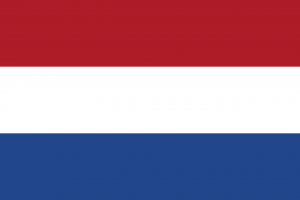Language/Dutch/Grammar/Nouns
Hi Dutch learners! 😊
In this lesson, we will dive into the Dutch grammar rules regarding nouns. Nouns are an essential part of any language, and learning how they work in Dutch will help you develop your conversational skills. We will cover everything from gender to plural forms, so let's get started!
Gender
In Dutch, every noun has a gender either masculine, feminine, or neuter. Unfortunately, there are no rules to determine the gender of nouns. Therefore, you have to learn the gender of each noun individually. However, there are a few generalizations that can help you guess the gender of some words:
- Words that end in -e are usually feminine, such as "de appel" (the apple)
- Words that end in -heid, -nis, -schap, -ing, or -teit are usually feminine, such as "de vrijheid" (the freedom)
- Words that end in -isme, -ment, -aar, or -ie are usually masculine, such as "de student" (the student)
- Words that end in -sel, -um, or -aar are usually neuter, such as "het meisje" (the girl)
Articles
The article has to agree with the gender of the noun it accompanies. In Dutch, there are two types of articles: definite and indefinite.
Definite Articles
In English, the definite article is "the." In Dutch, there are two forms of the definite article depending on the gender of the noun: "de" for masculine and feminine nouns, and "het" for neuter nouns. Here are some examples of the definite article in action:
| Dutch | Pronunciation | English |
|---|---|---|
| de man | de man | the man |
| de vrouw | de vrouw | the woman |
| het kind | het kind | the child |
Indefinite Articles
In English, the indefinite article is "a" or "an." In Dutch, the indefinite article also varies depending on the gender of the noun: "een" for masculine and feminine nouns, and "een" for neuter nouns:
| Dutch | Pronunciation | English |
|---|---|---|
| een boek | een boek | a book |
| een tafel | een tafel | a table |
| een huis | een huis | a house |
Plural Forms
In Dutch, the plural is formed by adding -en to a masculine or feminine noun and -s to a neuter noun. However, some nouns have irregular plural forms that you will have to learn as you go. Here are some examples:
| Dutch | Pronunciation | English |
|---|---|---|
| de man | de man-nen | the men |
| de vrouw | de vrouw-en | the women |
| het huis | de huis-sen | the houses |
Dialogue
Eva and Lars are discussing the gender of the words "book" and "computer."
- Eva: "Is 'boek' masculine, feminine, or neuter?" ('boek' = 'book')
- Lars: "It is a neuter noun, so it's 'het boek'." ('het boek' = 'the book')
- Eva: "What about 'computer'?" ('computer' = 'computer')
- Lars: "It's a masculine noun, so it's 'de computer'." ('de computer' = 'the computer')
Practice
Here are a few exercises to practice what you have learned:
1. What is the gender of the words: "de auto," "het raam," and "het boek"? 2. Form the plural of the words: "de hand," "de moeder," and "het brood." 3. Fill in the blanks with the correct article: "______ auto" and "______ vrouw."
- Answers: ##
1. "de auto" (masculine), "het raam" (neuter), and "het boek" (neuter) 2. "de handen," "de moeders," and "de broden" 3. "De auto" and "de vrouw"
If you want to practice more, find native speakers and ask them any questions. You can also improve your Dutch Grammar on Polyglot Club website.
Sources
➡ If you have any questions, please ask them in the comments section below.
➡ Feel free to edit this wiki page if you think it can be improved. 😎
Videos
Learn Dutch Grammar _ Master Important Rules for Plural Nouns ...
Learn Dutch phrases - using numbers and plural nouns - YouTube
Learn Dutch Grammar _ Possessive Pronouns - YouTube
Related Lessons
- Questions
- Interrogative words in Dutch
- Conditional Mood
- Ablative Case in Dutch
- Conditional Mood in Dutch
- Definite Articles in Dutch
- Present Continuous in Dutch
- How to use “to speak” in Dutch
- How to use “must” in Dutch
- Plural

